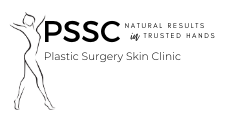With COVID-19 and a global pandemic changing how we think about cleanliness, hand sanitizer use is higher than ever.
The use of sanitizer is highly recommended and is proven to help stop the spread of viruses and bacteria. However, it seems like there is a price to pay: dry, chapped hands.
So how do you balance skin health with safety?
How Does Hand Sanitizers Damage Skin?
Hand hygiene products are meant to keep us safe from germs and bacteria, but overuse can irritate or damage the skin. One of the main causes of this is that sanitizing products dehydrate your hands.
At its mildest, this dehydration is itchy and/or irritating. However, with greater use, this can lead to cracked skin, and may even cause bleeding.
This damage can have long-lasting implications as dehydrated hands are more prone to skin diseases and disorders.
Another issue with hand sanitizers is their ingredients. It’s important to check the label before making a purchase. Some ingredients, like methanol, can be toxic. In fact, the FDA recently banned a line of methanol-containing hand sanitizer products that were causing nausea, dizziness and vomiting. At higher levels of exposure, this toxic sanitizer increased the risk of nerve damage, seizures and even blindness.
Even with brands using safer ingredients, there is a risk for those with certain allergies. If you notice a sudden or very severe reaction to a hand sanitizer, visit a medical professional. They may instruct you to avoid certain ingredients, or abstain from certain hand sanitizers altogether.
How to Minimize the Risks of Skin Damage
During the pandemic, and after, hand hygiene is important.
While you still need to keep your hands safe from germs and bacteria, there are steps you can take to significantly reduce your risk of skin damage.
Know When Soap & Water is Enough
99% of the time, thoroughly washing your hands with soap and water is good enough.
The UCL Institute for Global Health states that soap and water can actually be more effective at removing common germs than hand sanitizers. Also, it is just as effective at washing away bacteria and viruses.
Save hand sanitizers for when water and soap are not readily available, making it a last resort, but not a first choice.
Wear Gloves
Cleaning your hands isn’t the only way to limit exposure to germs and viruses. Instead of applying hand sanitizer frequently, and damaging the skin dermis, consider wearing protective gloves. This can help reduce the use of hand sanitizer.
Also, gloves can be a great reminder to stop us from absent-mindedly touching our faces. When we wear gloves, we also give ourselves a visual cue to not touch certain surfaces. This, in turn, can also help stop the spread of germs.
Take Extra Care to Hydrate
Take extra care to keep hydrated to counteract the harsh, dehydrating effects of hand sanitizers.
Drinking enough fluids and using moisturizing products can make a big difference, and will improve the overall appearance of your skin.
If hand dryness is becoming a problem, a wet glove soak may be in order. Hydrating gloves and hand masks can be purchased in-store or made at home with simple ingredients. These are a great way to repair and nourish chapped hands and skin.
How to Repair Damage
If your hands are already showing signs of damage and dryness, it’s not too late.
Skin care clinics provide advanced treatments to repair and reverse skin damage and help revitalize hands and skin.
BBL (Broadband Light) therapy uses specialized lasers to repair skin damage on the face, neck, hands, and chest. BBL is non-invasive, with virtually no downtime and is safe and easy.
The laser treatment even improves skin tone and texture, so your skin will look better than ever! Book a consultation with our team of plastic surgeons at PSSC in Newmarket!

